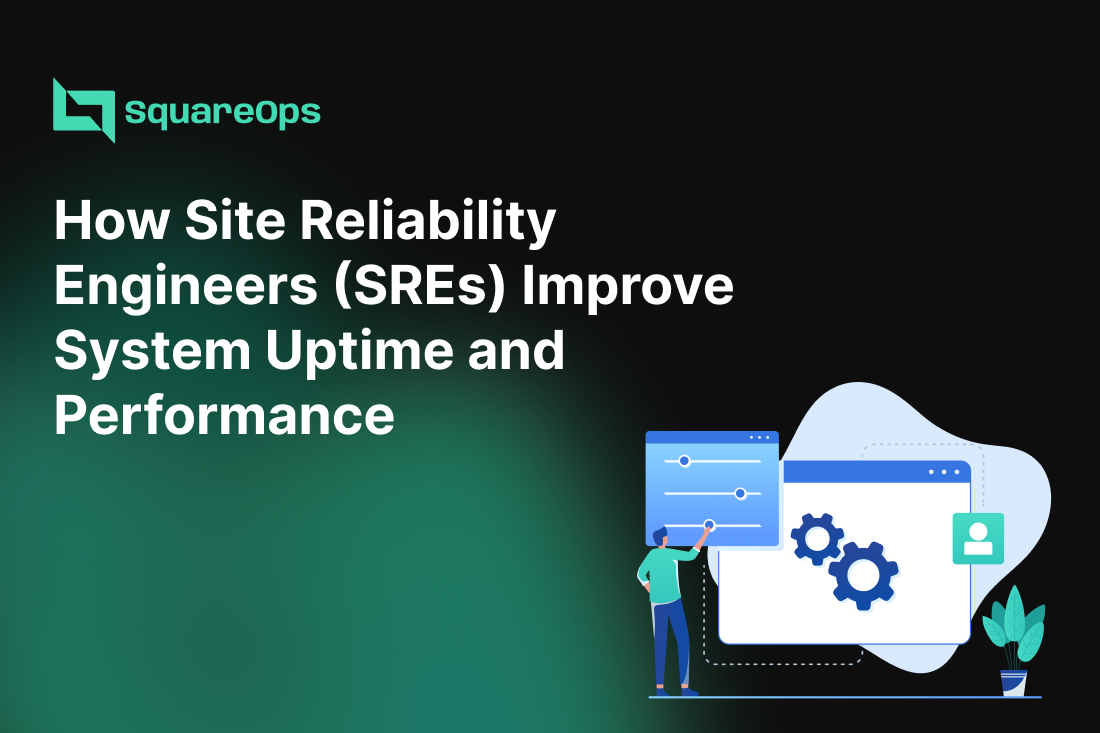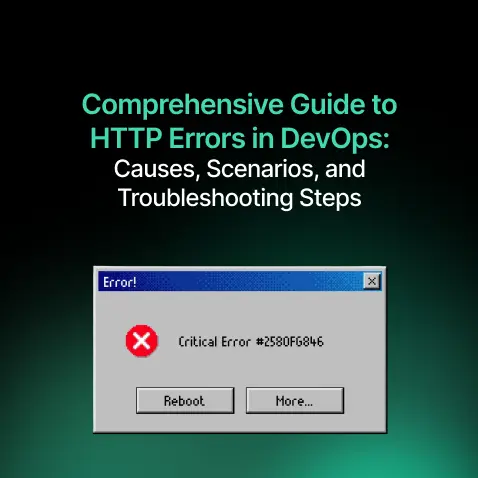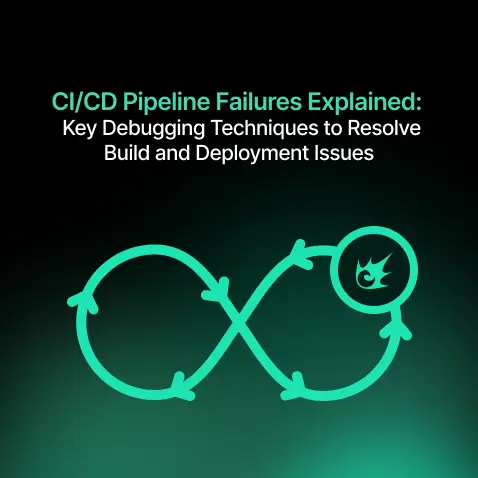How Site Reliability Engineers (SREs) Improve System Uptime and Performance
- Nitin Yadav
- Knowledge
About

Learn how Site Reliability Engineers (SREs) reduce downtime, boost performance, and scale systems with automation and observability. See how SquareOps drives reliability in 2025.
Industries
- AWS, CI/CD Pipelines, DevOps, Devops Service Provider, SquareOps
Share Via
Introduction
Customers demand instant, uninterrupted access to services—whether it’s a fintech platform, a healthcare dashboard, or an e-commerce store. For engineering teams, maintaining this level of uptime and performance while deploying features quickly and scaling infrastructure globally is a massive challenge.
Enter the Site Reliability Engineer (SRE)—a modern role that sits at the intersection of software engineering and operations. First formalized by Google, SREs are now essential to ensuring system reliability, scalability, and performance across distributed cloud-native applications.
This guide explores the critical responsibilities of SREs, the technologies they use, how they reduce downtime and improve performance, and why businesses of all sizes are integrating SRE functions into their DevOps practices. We’ll also show how SquareOps delivers full-stack reliability engineering as a service.
What is a Site Reliability Engineer?
A Site Reliability Engineer (SRE) is a software engineer with a strong focus on system operations and automation. SREs are responsible for ensuring that applications and infrastructure meet performance benchmarks, remain available, and recover quickly in the face of failure.
While traditional operations teams focused on reactive maintenance, SREs operate proactively using automation, monitoring, and fault injection to preempt failures. Their work includes:
- Setting and enforcing Service Level Objectives (SLOs) and Service Level Indicators (SLIs)
- Automating infrastructure and deployment pipelines
- Managing incident response and post-incident reviews
- Building monitoring and observability systems
- Designing scalable, fault-tolerant infrastructure
SREs aim to maintain a balance between system reliability and engineering agility—ensuring users don’t suffer downtime while developers ship code quickly.
Key Responsibilities of SREs
1. Establishing SLAs, SLOs, and SLIs
SREs formalize reliability expectations:
- SLIs (Service Level Indicators): Quantitative measurements like request latency, availability, or error rates
- SLOs (Objectives): Target goals for SLIs (e.g., 99.95% availability per quarter)
- SLAs (Agreements): External commitments to customers, often tied to penalties
2. Monitoring and Observability
SREs implement observability stacks that capture telemetry across all layers:
- Metrics (CPU usage, latency)
- Logs (error reports, access logs)
- Traces (distributed tracing for microservices)
They use tools like Prometheus, Grafana, Datadog, New Relic, Jaeger, and OpenTelemetry.
3. Incident Management and Root Cause Analysis
When systems fail, SREs lead incident response:
- Run on-call rotations with automated escalation (via PagerDuty, Opsgenie)
- Conduct blameless post-mortems to identify systemic failures
- Document and automate incident playbooks
4. Automation and Elimination of Toil
SREs seek to reduce “toil”—manual, repetitive tasks:
- Automate scaling, patching, and backups
- Implement self-healing mechanisms
- Use Infrastructure as Code (IaC) with Terraform or CloudFormation
5. Performance Optimization
SREs continuously optimize systems:
- Profile application performance under load
- Right-size instances and containers
- Enforce latency budgets and request quotas
6. Capacity Planning and Scalability
SREs use historical data and predictive models to:
- Forecast resource requirements
- Enable elastic scaling
Prevent service degradation during spikes
How SREs Improve System Uptime
Proactive Monitoring
SREs use real-time data to catch early warning signs. Instead of waiting for alerts about server failures, they monitor leading indicators like latency spikes or slow database queries.
Fault Injection and Chaos Engineering
By intentionally introducing failure, SREs strengthen the system’s ability to recover. Tools like Gremlin and Chaos Monkey simulate outages to validate recovery mechanisms.
Error Budgets
Error budgets help teams balance innovation and stability. If a service exceeds its SLO error budget, engineering is restricted from deploying new features until reliability is restored.
Blameless Post-Mortems
After an incident, SREs lead reviews that focus on learning—not blaming. They uncover underlying causes and implement process, design, or monitoring fixes.
How SREs Improve Performance
Continuous Performance Benchmarking
SREs profile services regularly to identify latency bottlenecks. They use tools like Apache JMeter, k6, or Locust to stress-test systems before peak usage.
Code Optimization Guidance
SREs analyze stack traces, memory leaks, and slow functions. They work closely with developers to write efficient, scalable code.
Infrastructure Right-Sizing
Cloud resources are often over-provisioned. SREs identify underused instances and recommend optimized compute/storage configurations.
Microservices Dependency Tracing
Using tools like Jaeger or Zipkin, SREs trace inter-service calls to understand how service B’s latency affects service A, enabling bottleneck isolation and resolution.
Tools Commonly Used by SREs
Tool | Category | Use Case |
Prometheus | Monitoring | Collect system and app metrics |
Grafana | Visualization | Create custom dashboards |
Datadog | Observability | Full-stack monitoring and alerts |
PagerDuty | Incident Management | On-call management & alerting |
Terraform | Infrastructure as Code | Automate cloud infrastructure |
Gremlin | Chaos Engineering | Test system resilience |
Jaeger | Tracing | Analyze service-level latencies |
OpenTelemetry | Observability | Unified telemetry data pipeline |
Benefits of Integrating SREs into Your Engineering Org
- Increased uptime: Services meet or exceed availability targets
- Faster incident response: MTTR drops through automation
- Developer efficiency: Engineers focus on building, not firefighting
- Scalable architecture: Systems scale predictably under load
- Culture of reliability: Operations becomes proactive, not reactive
Better user experience: Reduced downtime means happier users
Why Partner with SquareOps for SRE Services
Hiring and training a full SRE team is expensive and time-consuming. SquareOps offers on-demand, fully managed SRE-as-a-Service:
- Certified cloud-native SREs with hands-on experience
- Custom SLIs/SLOs setup and monitoring stack deployment
- CI/CD pipeline reliability engineering
- Incident management with 24/7 coverage
- Cost-efficient observability and automation solutions
From startups scaling quickly to enterprises modernizing legacy infrastructure, SquareOps brings proven SRE practices that elevate performance and resilience.
Conclusion
System reliability is no longer negotiable. Customers expect 24/7 access, instant response times, and seamless performance. A Site Reliability Engineer helps engineering teams meet these expectations through code, automation, and data-driven operations.
Whether you’re launching your MVP or scaling globally, integrating SRE principles can dramatically reduce downtime, improve customer satisfaction, and give your team room to innovate.
SquareOps helps businesses of all sizes adopt SRE practices quickly and effectively. Ready to build for resilience?
Let’s make reliability your competitive advantage.
Frequently asked questions
DevOps is a cultural framework; SRE is a specific practice focused on reliability and uptime.
Yes. SREs write scripts, build tools, and contribute to infrastructure and monitoring automation.
Yes. SREs ensure observability and stability during and after migrations.
SaaS, fintech, eCommerce, healthcare, and any business with high traffic or uptime needs.
A collaborative incident review focused on understanding and fixing systemic causes, not blaming individuals.
Prometheus, Datadog, OpenTelemetry, Jaeger, Grafana, and ELK Stack.
Industry average ranges from 1 SRE for every 10–15 developers.
With SquareOps, foundational observability and reliability workflows can begin within 1–2 weeks
Not necessarily. Fractional or project-based SRE support from SquareOps can deliver high impact affordably.
Track metrics like MTTR, number of incidents, error budget adherence, and service uptime vs. SLOs.
Related Posts

Comprehensive Guide to HTTP Errors in DevOps: Causes, Scenarios, and Troubleshooting Steps
- Blog

Trivy: The Ultimate Open-Source Tool for Container Vulnerability Scanning and SBOM Generation
- Blog

Prometheus and Grafana Explained: Monitoring and Visualizing Kubernetes Metrics Like a Pro
- Blog

CI/CD Pipeline Failures Explained: Key Debugging Techniques to Resolve Build and Deployment Issues
- Blog

DevSecOps in Action: A Complete Guide to Secure CI/CD Workflows
- Blog

AWS WAF Explained: Protect Your APIs with Smart Rate Limiting
- Blog

